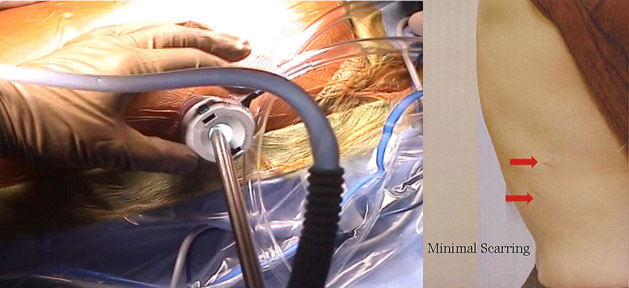Minimally Invasive Scoliosis Surgery
Minimally Invasive Scoliosis Technique
Video-Assisted Scoliosis Surgery (VATS)
Dr. Lonner is one of a handful of surgeons around the world who performs minimally invasive scoliosis surgery as part of the corrective procedure for spinal deformity of various types such as scoliosis and kyphosis. He is one of the pioneers of video-assisted thoracoscopic scoliosis surgery (VATS) which is now utilized in only several centers around the world to enhance surgical corrections for spinal conditions such as scoliosis.
Traditional spine surgery for large curvatures utilized large incisions in the chest cage to access the front (anterior aspect) of the spine and remove discs and parts of the vertebra or spinal bones (anterior release) to help in the correction of the deformity which is then approached from the back (posterior approach). This anterior approach fell by the way side because it caused a lot of pain, affected lung function and resulted in a big scar and potential complications. As the posterior techniques improved the role of anterior surgery became less important. Nevertheless, as Dr. Lonner has shown in a recent multicenter study, anterior release in addition to posterior surgery with pedicle screws (current technique) provides improved correction of the scoliosis as well as 3-D correction of the spine. For the properly indicated patient, this provides better corrections of the scoliosis than posterior alone.
The anterior release in Dr. Lonner’s hands is done with a scope and two very small incisions each less than an inch long. This is termed video-assisted scoliosis surgery or VATS. The procedure takes an hour and there is minimal blood loss. The benefit is better correction of the scoliosis. Another indication is to perform fusionless surgery of the thoracic spine which must be performed via an anterior (front) approach [see fusionless surgery].
Indications for VATS:
- Severe thoracic scoliosis greater than 70 degrees
- Rigid or stiff severe curvature
- Severe thoracic hypokyphosis or lordosis (sway)
- Fusionless Tethering Procedures or Flexible Fusion (VBT) procedures

